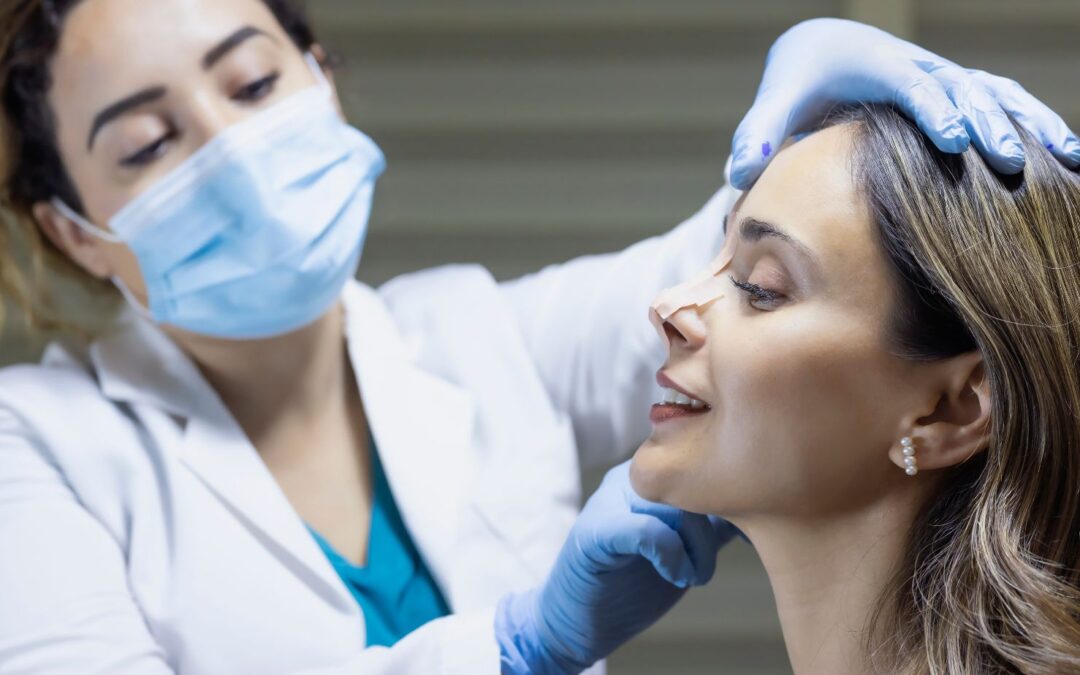If you dislike your nose and want to change its appearance, shape, or size, you are not alone. People have been restructuring their nasal regions since 600 BCE, and it is mentioned in ancient Egyptian and Indian texts. Unfortunately, most people who undergo this procedure don’t understand rhinoplasty recovery. However, with better pre-surgery preparations and aftercare, your nose may heal faster. Here is what you should expect during your nose job recovery.
Swelling After a Nose Job
Every medical procedure can leave you with some form of swelling, but this varies with individuals. Since your facial tissues are loose, the swelling can be more pronounced, leaving your face distorted.
Luckily, surgeons can prescribe the right medication for dealing with the swelling, but staying elevated and well-hydrated can come in handy. You can also reduce the swelling by doing the following:
- Avoid lifting or bending during the first two weeks. This activity can do more than aggravate your swelling; it can increase your blood pressure, leaving you bleeding.
- Keep your head above your heart, even when sleeping: You can elevate your face using a recliner or pillow. Your pillow can work, but if you slip off while sleeping, you can experience increased swelling and nasal stiffness.
- Try cold therapy during the first two days after the surgery: Applying frozen peas or gel ice to your forehead and eyes can reduce the swelling while soothing discomfort. However, make sure it doesn’t wet the tape or apply too much pressure on the splint.
Sneezing and blowing your nose immediately after the surgery can increase the swelling and bleeding. Make sure you stay in a dust-free environment.
Discoloration
It’s normal to have bruises that leave your face discolored after surgery. Like swelling, discoloration will be more pronounced during the first few days. Fortunately, some of the things that reduce swelling can also help with discoloration.

A proper diet and hydration can support quick healing, but you can alleviate this symptom using cold presses. Some color variations can be part of your healing process, while others indicate potential risk, so you should watch out for the following:
- Abnormal discoloration, including white or blue, points to poor blood flow to your nasal region.
- Persistent redness can be a sign of an infection.
Redness accompanied by warmth can be caused by an infection; consult Dr. Jay Calvert plastic surgery clinic when you notice these signs. Dealing with these symptoms early can prevent unwanted complications.
Hemorrhage
Bleeding immediately after surgery is normal, but it can stop after a few days. You may have to learn how to replace the nasal packs after every few hours. If your nose starts bleeding, you should lie down and elevate your head. Avoid getting excited and take your pain medication.

Your pain medication can keep your blood pressure low while reducing bleeding.
Endnote
Like any other procedure, you should expect your wounds to swell and even bleed during the first few days. The surgeon can stop the bleeding by inserting some nasal packs into your nose. Your swollen nose can leave your face disfigured but will subside with time. To reduce the swelling, you can apply cold presses and avoid lifting things immediately after the surgery.
Jessica has a flair for writing engaging blogs and articles. She enjoys reading and learning new things which enables her to write different topics and fields with ease. She also strives to break down complex concepts and make them easy for anybody to comprehend.





